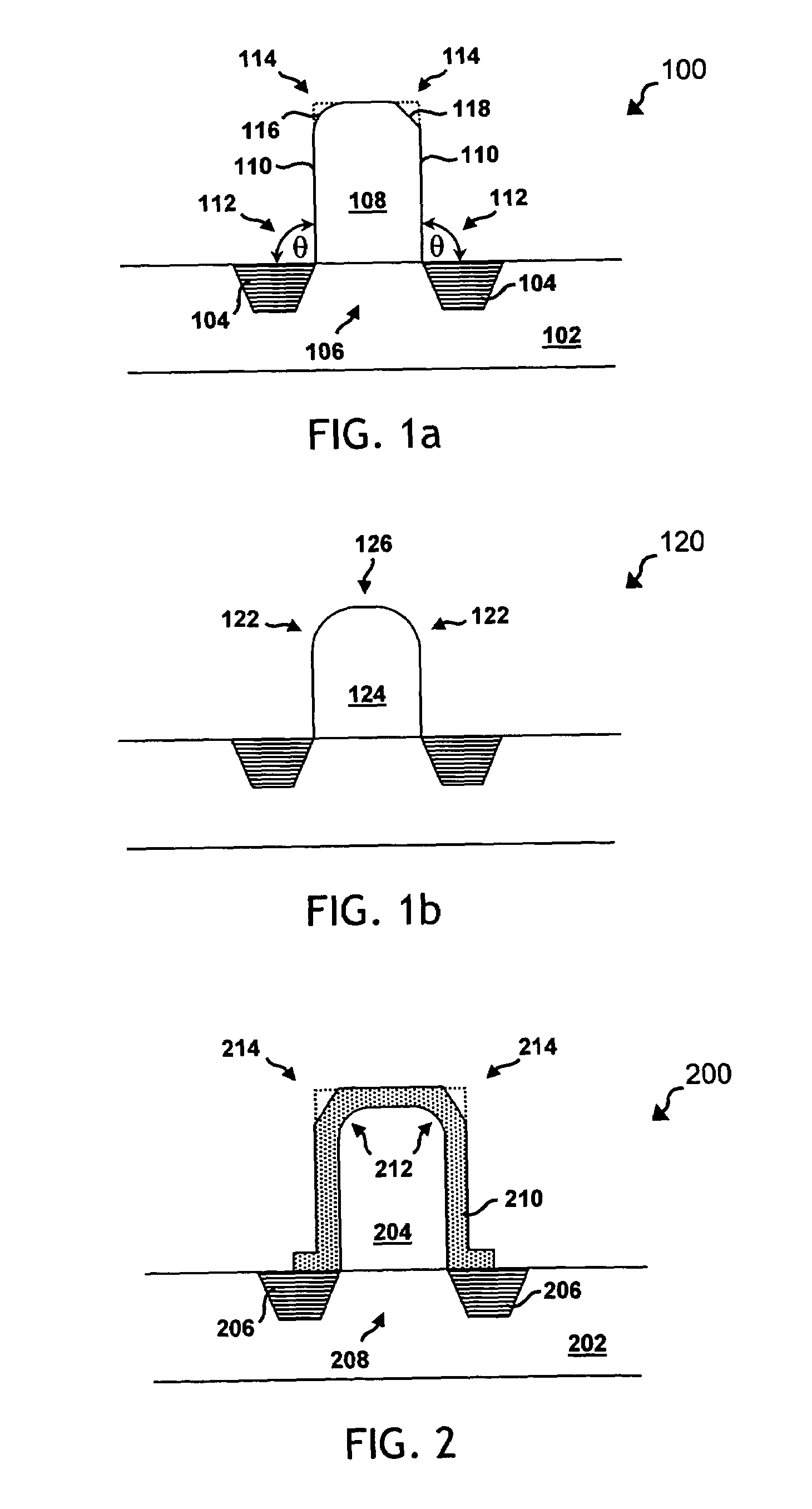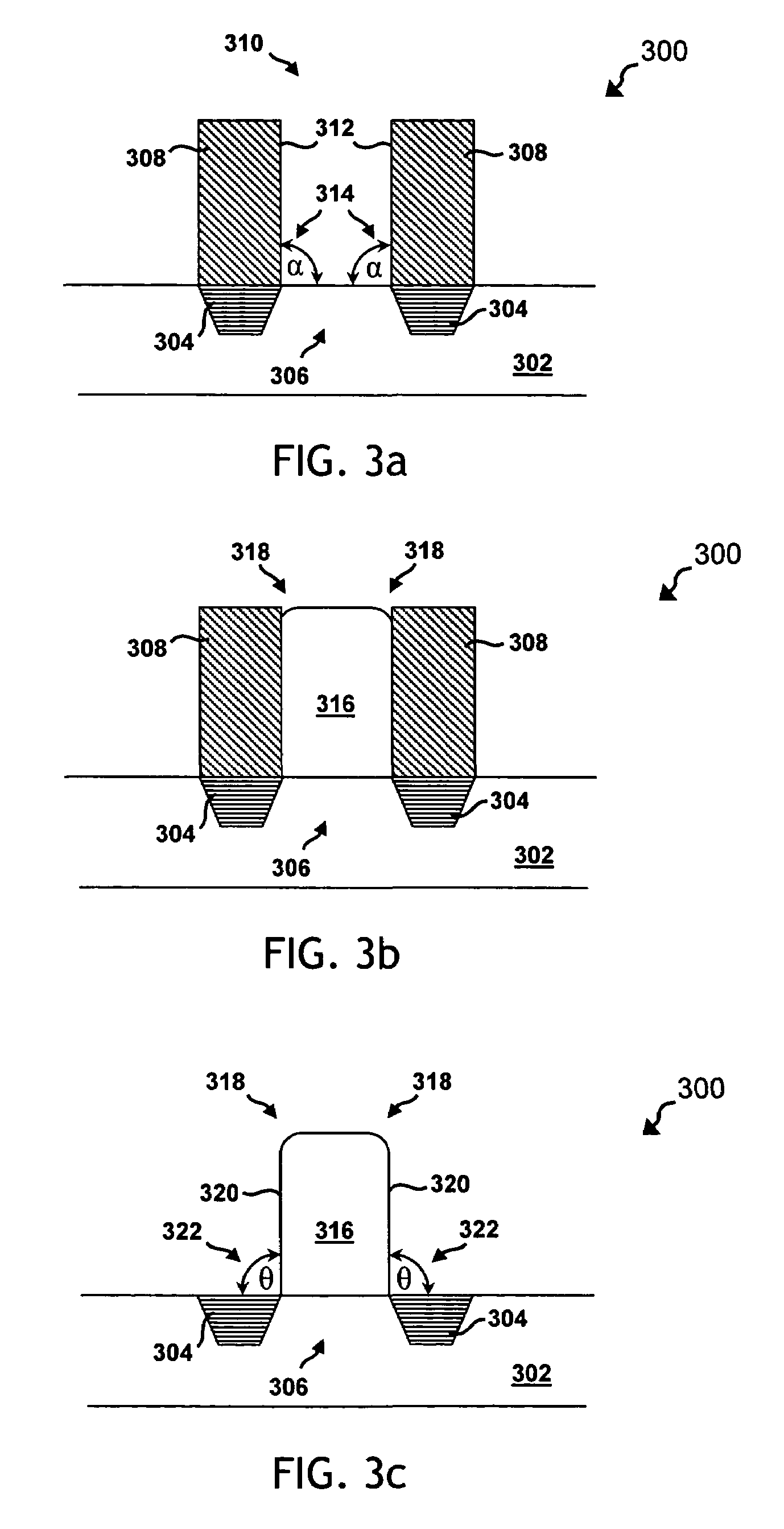Versatile system for triple-gated transistors with engineered corners
a technology of engineered corners and transistors, applied in the field of semiconductor devices, can solve the problems of reducing reducing the cost of the device, and generating numerous challenges to the semiconductor manufacturing process, and achieving the effects of improving the efficiency of the device, and improving the reliability of the devi
- Summary
- Abstract
- Description
- Claims
- Application Information
AI Technical Summary
Benefits of technology
Problems solved by technology
Method used
Image
Examples
Embodiment Construction
[0023]While the making and using of various embodiments of the present invention are discussed in detail below, it should be appreciated that the present invention provides many applicable inventive concepts, which can be embodied in a wide variety of specific contexts. The present invention is hereafter illustratively described in conjunction with the formation of a triple-gate CMOS transistor. The specific embodiments discussed herein are, however, merely demonstrative of specific ways to make and use the invention and do not limit the scope of the invention.
[0024]Comprehending certain structural, performance and reliability issues inherent in conventional multiple-gate transistor formation, the present invention recognizes that it may be desirable to tailor certain device structures—particularly silicon body structures, utilized as channels—in a selective manner. The present invention further recognizes that it may be desirable to blunt or otherwise nullify square corners or edge...
PUM
 Login to View More
Login to View More Abstract
Description
Claims
Application Information
 Login to View More
Login to View More - R&D
- Intellectual Property
- Life Sciences
- Materials
- Tech Scout
- Unparalleled Data Quality
- Higher Quality Content
- 60% Fewer Hallucinations
Browse by: Latest US Patents, China's latest patents, Technical Efficacy Thesaurus, Application Domain, Technology Topic, Popular Technical Reports.
© 2025 PatSnap. All rights reserved.Legal|Privacy policy|Modern Slavery Act Transparency Statement|Sitemap|About US| Contact US: help@patsnap.com



